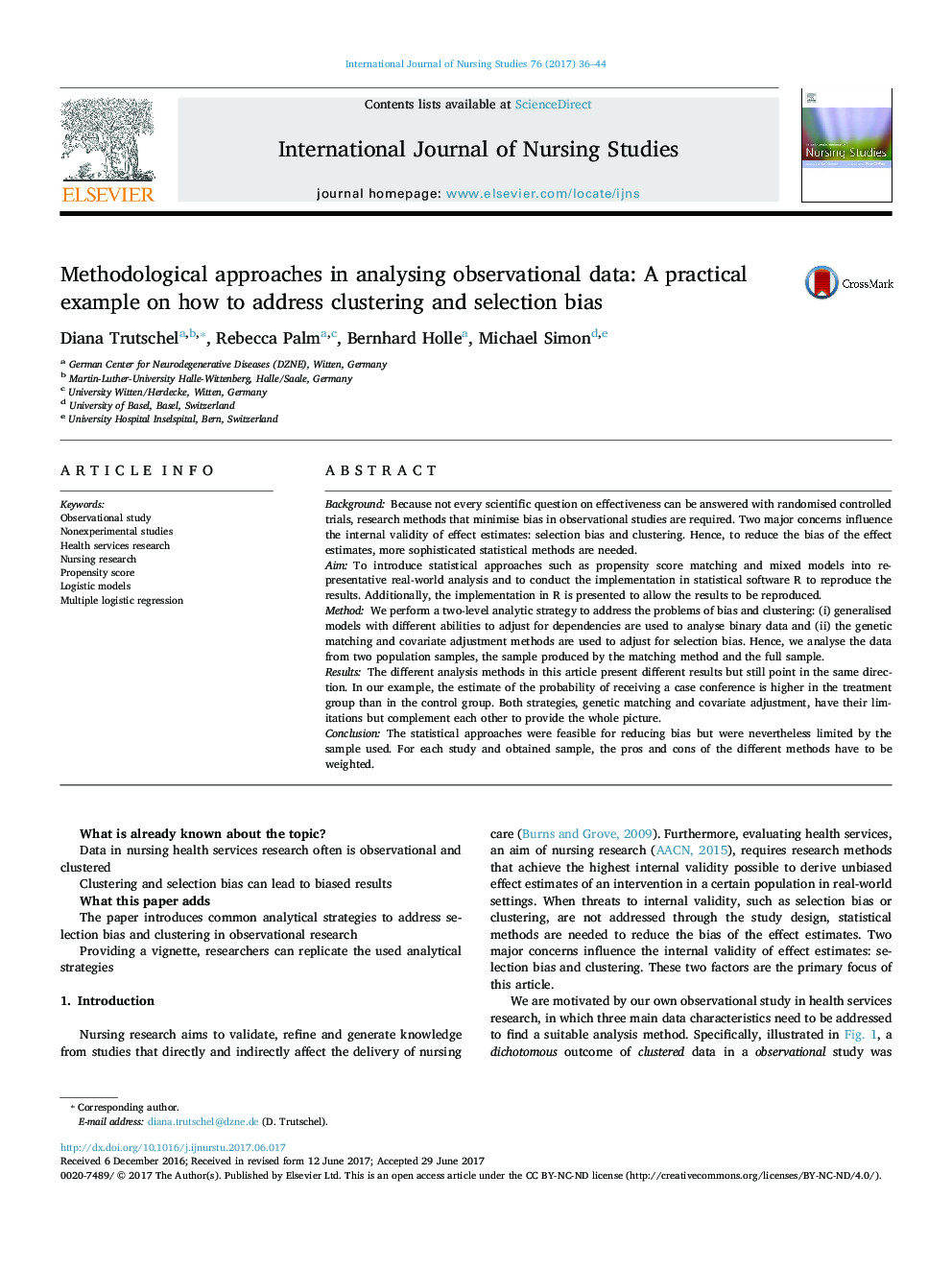| کد مقاله | کد نشریه | سال انتشار | مقاله انگلیسی | نسخه تمام متن |
|---|---|---|---|---|
| 5120950 | 1486493 | 2017 | 9 صفحه PDF | دانلود رایگان |
BackgroundBecause not every scientific question on effectiveness can be answered with randomised controlled trials, research methods that minimise bias in observational studies are required. Two major concerns influence the internal validity of effect estimates: selection bias and clustering. Hence, to reduce the bias of the effect estimates, more sophisticated statistical methods are needed.AimTo introduce statistical approaches such as propensity score matching and mixed models into representative real-world analysis and to conduct the implementation in statistical software R to reproduce the results. Additionally, the implementation in R is presented to allow the results to be reproduced.MethodWe perform a two-level analytic strategy to address the problems of bias and clustering: (i) generalised models with different abilities to adjust for dependencies are used to analyse binary data and (ii) the genetic matching and covariate adjustment methods are used to adjust for selection bias. Hence, we analyse the data from two population samples, the sample produced by the matching method and the full sample.ResultsThe different analysis methods in this article present different results but still point in the same direction. In our example, the estimate of the probability of receiving a case conference is higher in the treatment group than in the control group. Both strategies, genetic matching and covariate adjustment, have their limitations but complement each other to provide the whole picture.ConclusionThe statistical approaches were feasible for reducing bias but were nevertheless limited by the sample used. For each study and obtained sample, the pros and cons of the different methods have to be weighted.
Journal: International Journal of Nursing Studies - Volume 76, NovemberâDecember 2017, Pages 36-44
